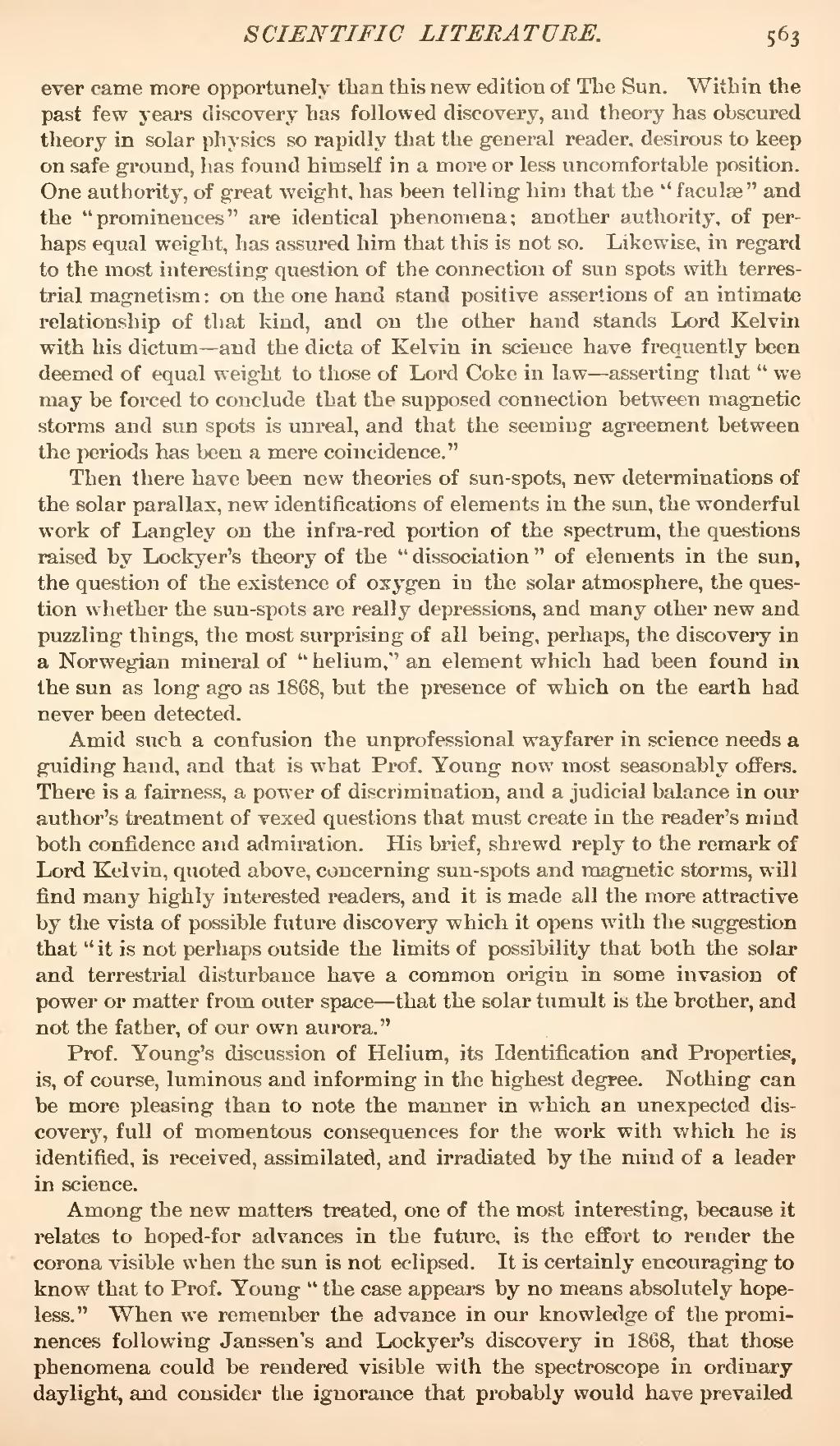ever came more opportunely than this new edition of The Sun. Within the past few years discovery has followed discovery, and theory has obscured theory in solar physics so rapidly that the general reader, desirous to keep on safe ground, has found himself in a more or less uncomfortable position. One authority, of great weight, has been telling him that the "faculæ" and the "prominences" are identical phenomena; another authority, of perhaps equal weight, has assured him that this is not so. Likewise, in regard to the most interesting question of the connection of sun spots with terrestrial magnetism: on the one hand stand positive assertions of an intimate relationship of that kind, and on the other hand stands Lord Kelvin with his dictum—and the dicta of Kelvin in science have frequently been deemed of equal weight to those of Lord Coke in law—asserting that "we may be forced to conclude that the supposed connection between magnetic storms and sun spots is unreal, and that the seeming agreement between the periods has been a mere coincidence."
Then there have been new theories of sun-spots, new determinations of the solar parallax, new identifications of elements in the sun, the wonderful work of Langley on the infra-red portion of the spectrum, the questions raised by Lockyer's theory of the "dissociation" of elements in the sun, the question of the existence of oxygen in the solar atmosphere, the question whether the sun-spots are really depressions, and many other new and puzzling things, the most surprising of all being, perhaps, the discovery in a Norwegian mineral of "helium," an element which had been found in the sun as long ago as 1868, but the presence of which on the earth had never been detected.
Amid such a confusion the unprofessional wayfarer in science needs a guiding hand, and that is what Prof. Young now most seasonably offers. There is a fairness, a power of discrimination, and a judicial balance in our author's treatment of vexed questions that must create in the reader's mind both confidence and admiration. His brief, shrewd reply to the remark of Lord Kelvin, quoted above, concerning sun-spots and magnetic storms, will find many highly interested readers, and it is made all the more attractive by the vista of possible future discovery which it opens with the suggestion that "it is not perhaps outside the limits of possibility that both the solar and terrestrial disturbance have a common origin in some invasion of power or matter from outer space—that the solar tumult is the brother, and not the father, of our own aurora."
Prof. Young's discussion of Helium, its Identification and Properties, is, of course, luminous and informing in the highest degree. Nothing can be more pleasing than to note the manner in which an unexpected discovery, full of momentous consequences for the work with which he is identified, is received, assimilated, and irradiated by the mind of a leader in science.
Among the new matters treated, one of the most interesting, because it relates to hoped-for advances in the future, is the effort to render the corona visible when the sun is not eclipsed. It is certainly encouraging to know that to Prof. Young "the case appears by no means absolutely hopeless." When we remember the advance in our knowledge of the prominences following Janssen's and Lockyer's discovery in 1868, that those phenomena could be rendered visible with the spectroscope in ordinary daylight, and consider the ignorance that probably would have prevailed

